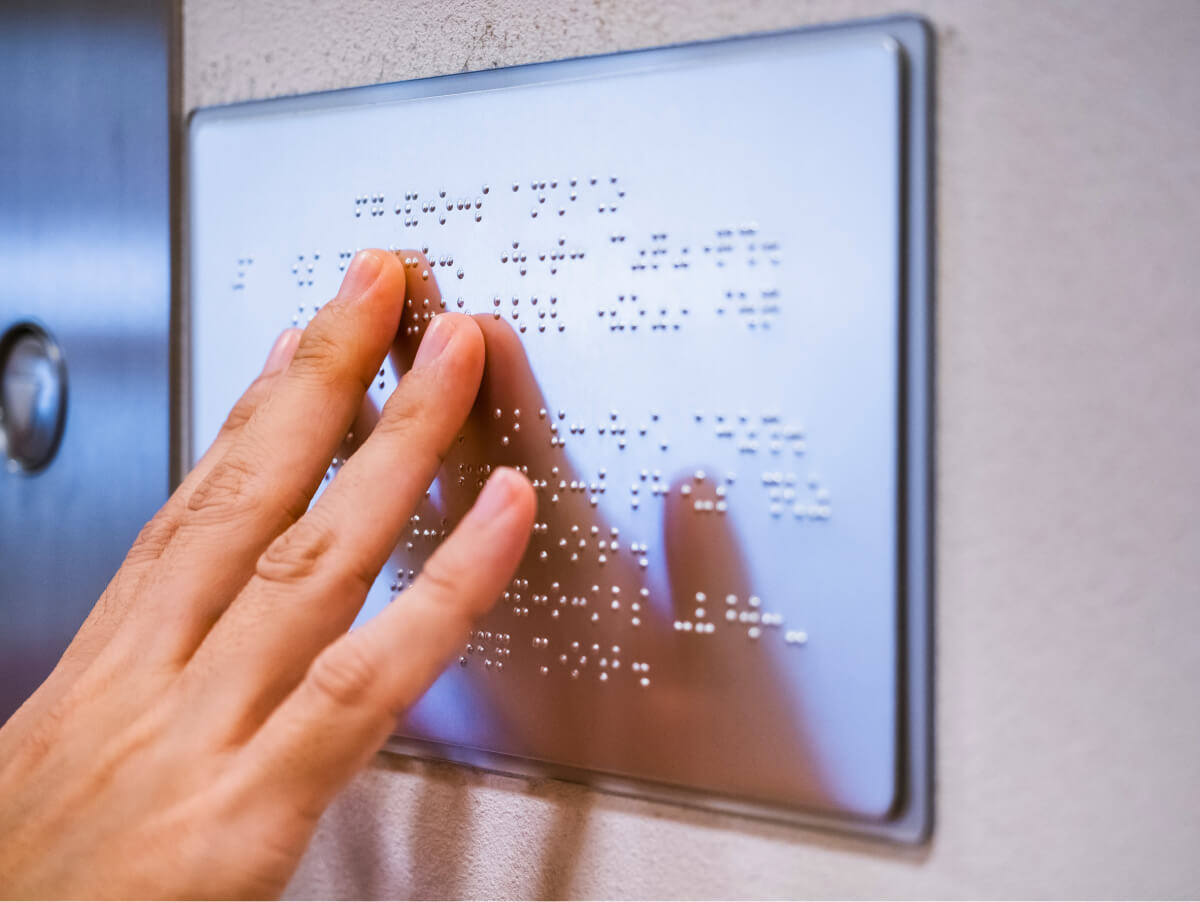What Are Braille Signs?
Braille signs are tactile signs that use the Braille system, which is a raised dot method that blind or low-vision individuals may read with their fingertips. These signs are essential for providing accessible information in public spaces. Many facilities now incorporate ADA signs with braille to comply with accessibility standards and ensure inclusiveness for all individuals. Created in the 19th century by Louis Braille, the Braille system has grown to be an indispensable resource for the visually impaired community’s literacy and information access.
The Importance of Braille Signs
Incorporating Braille signs in various settings ensures equal access for all individuals. By helping people navigate public spaces independently, these signs promote inclusivity and equality. The presence of Braille signage can significantly enhance the quality of life for people with vision impairments, enabling them to access information and services easily. Additionally, Braille signs empower visually impaired individuals to participate more fully in society, leading to greater independence and confidence. For businesses, incorporating Braille signage demonstrates a commitment to accessibility and inclusivity, which can enhance their reputation and customer satisfaction.
Laws and Regulations Governing Braille Signs
Several laws mandate the use of Braille signs in public areas. For example, the Americans with Disabilities Act (ADA) requires Braille signage in many public and private facilities. These regulations are critical in maintaining accessibility standards. Ensuring that surroundings are accessible to all people, regardless of their physical ability, is ensured by compliance with these rules. The ADA, enacted in 1990, has been a significant milestone in promoting equal access and opportunities for individuals with disabilities, and its provisions extend to the design and implementation of Braille signs to eliminate barriers in public spaces.
Applications of Braille Signs in Various Environments
- Hospitals and Healthcare Facilities
- Educational Institutions
- Corporate Buildings
- Public Transportation Systems
- Hotels and Restaurants
The application of Braille signs extends across numerous fields. Braille signs, for example, can help patients and visitors navigate their way around medical facilities in healthcare environments. In educational institutions, they enable students with visual impairments to locate classrooms and resources independently. Corporate buildings use Braille signs to make offices more accessible to employees and visitors with vision impairments. Public transportation systems benefit from Braille signs by helping passengers navigate stations and terminals. Additionally, hotels and restaurants can use Braille signage to make their facilities more welcoming and easier to use for all guests.
How Braille Signs Are Made
The production of Braille signs involves specialized technology to ensure the dots are accurate and readable. Materials used often include durable plastics and metals to withstand various environmental conditions. Modern manufacturing techniques use precision engraving and high-quality materials to create signs that are both functional and aesthetically pleasing. The process often involves computer-aided design (CAD) software to lay out the Braille dots accurately before they are embossed or engraved onto the sign material. Strict quality control procedures are implemented to guarantee that the haptic components meet ADA requirements and are readable and consistent.
Innovations in Braille Signage
Technological advancements have resulted in innovative solutions for Braille signage. For example, some modern products incorporate digital interfaces that provide both tactile and audio information, enhancing accessibility. A recent BBC article discusses some cutting-edge developments in this space. These advancements are particularly beneficial in creating a more inclusive environment for everyone. Innovations such as smart Braille displays and interactive Braille kiosks offer multisensory feedback, making it easier for visually impaired individuals to receive and interpret information. Braille Signs will be able to better meet the needs of its users as long as technology keeps developing.
Resources for Acquiring and Implementing Braille Signs
Organizations looking to implement Braille signage can find numerous resources online. Websites like the National Braille Association provide valuable information and guidelines on acquiring appropriate signage. These resources are essential for ensuring that Braille signs meet all necessary standards and are correctly installed. Additionally, professional organizations and industry associations offer training and certification programs for those responsible for designing and installing Braille signs. Leveraging these resources can help organizations create more accessible environments while staying compliant with legal and regulatory requirements.
The Future of Braille Signs
The future of Braille signage is promising, with continued advancements in technology and materials that improve both functionality and aesthetics. As awareness and demand grow, these signs will play a vital role in creating more accessible environments worldwide. The integration of smart technologies into Braille signage could revolutionize how visually impaired individuals interact with their surroundings. Emerging trends include the use of sustainable materials and eco-friendly production methods, aligning with broader environmental goals while maintaining high accessibility standards. By embracing these innovations, the development of Braille signage will continue to enhance inclusivity and accessibility for all individuals.
Conclusion
In conclusion, Braille signs are crucial for promoting accessibility and inclusivity across various environments, from healthcare facilities to public transportation. Their integration, driven by laws like the ADA, ensures that visually impaired individuals can navigate spaces independently and confidently. Innovations in technology are enhancing these signs’ functionality, while future advancements promise to further improve their effectiveness. Ultimately, by embracing these developments, society can continue to foster an inclusive environment where everyone has equal access to information and services.

Leave a Reply